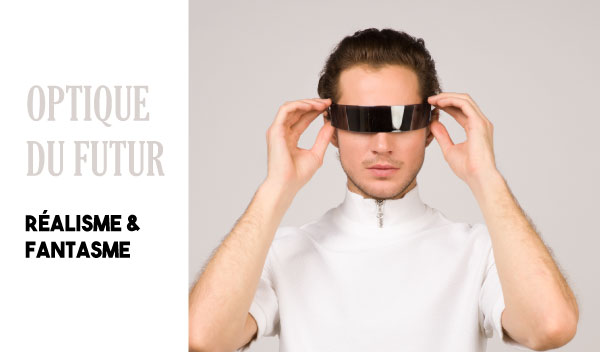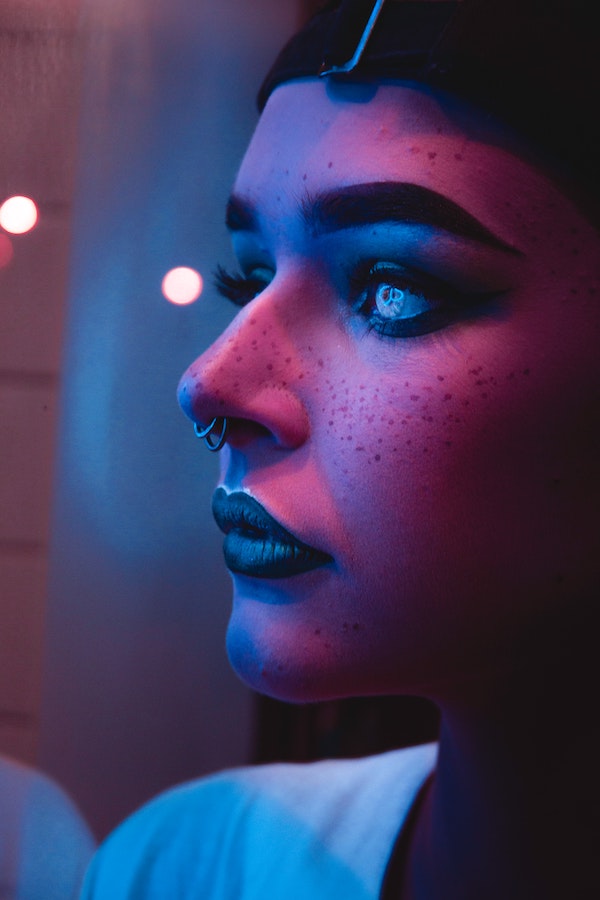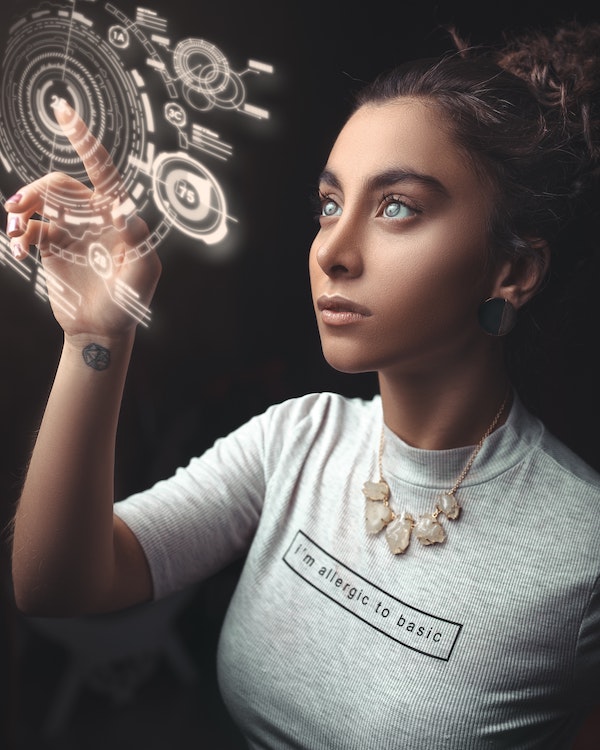FILE: The Optics of the Future: Realism & Fantasy

It's been almost ten years since connected optical devices became a very concrete concept. Like any technological innovation, they had their beginnings before taking off. Their advent is only a matter of time. While we still expect a lot from the big American tech brands, and in particular GAFA, the first to communicate without having convinced anyone yet, some models are already weighing on the market. We take stock in this new report on the optics of the future.
Optics of the future: the digital revolution, finally?
Since the launch of Google Glass in 2011, smart glasses have become a more concrete project, but one that seemed infinitely more difficult to implement than a smartphone or a watch. The fault lies with the device itself, which offers little space to integrate a digital system. The project, promising, was at a standstill three years later. The idea seemed good, but unrealizable. The aesthetic and practical side of the device was bound to fail it. As a bonus, inserting a camera into an optical device raised the question of respect for privacy. Digital seemed to have found its limits and the revolution would stop there.
But that was without counting on technological progress and the determination of researchers who gradually managed to get around the obstacles and difficulties. The most surprising thing was that the revolution was not going to come, for once, from GAFA. The main problem comes mainly from comfort, because when it comes to features and possibilities, there is no shortage of ideas. Video games have already begun their technical and technological transformation with virtual reality , allowing you to fully immerse yourself in your game.

Mixed reality, already on point
But for glasses, it looks infinitely more complicated. There is no question of abandoning the idea. Above all, before marketing to the general public, there is the possibility of helping the professional sector. The artificial intelligence axis makes it possible to offer companies like DHL, Boeing or General Electric devices to make their work easier. This is also the case in the medical field. After all, if the aesthetics are not suitable, it is not a problem, the main thing is to save time and increase productivity.
The user, on a construction site or during an operation, will be able to benefit from mixed reality , a mix between the real and the virtual.
The other tech players, whether members of GAFA or not, continue to believe in it. Facebook and Apple in particular, specify that they are still working to improve their prototype. Especially since some studies predict the obsolescence of the smartphone in the coming decade. Glasses and watches would therefore no longer just complement the telephone, but replace it.
Future optics in the context of the Internet of Things
But what will the glasses of the future look like? At the beginning of the 2000s, it was very difficult to imagine what, twenty years later, we could do with a telephone… Will it be the same with our glasses? It's likely. We could even be dazzled even more.
Indeed, the glasses of the future could and should integrate a form of artificial intelligence much more developed than the one we know. So, yes, the start seems very long for connected glasses but we must also take into account our awareness of the possibilities, much greater than in the last century.
According to EyeSee Mag : " Not only will AI be able to reproduce precise behavior but it will also be able to predict, judge, learn from what the user sees, reads, writes, listens to then be able to adapt or anticipate. Associated with ever more data, with even more efficient technologies dedicated to artificial intelligence, with increasingly advanced algorithms, the assistants that will equip our glasses of tomorrow will undoubtedly know their owner's habits like the back of their hand and will be able to identify and anticipate their needs at their request to quickly make themselves indispensable. "
Above all, the glasses will have to be automatically integrated into a connected environment , which we call "Internet of Things" (IoT), an infrastructure that allows all objects to be connected connected (from the fridge to the TV to the cat's bowl?)
Optical devices without limits?
But let's stay on the subject of glasses? In concrete terms, what would that mean?
What is now certain is that future smart glasses will integrate at least the features of our phones (navigation, call and message management, media, etc.) while sometimes making them more practical thanks to the device (sport, translation, driving, etc.)
The Chinese brand Xiaomi has already presented an ambitious device, without yet announcing a name, price or release date.
But in the future, could it be even crazier?
Indeed, we can already approach possibilities that go beyond the imagination. So why can't these glasses, which can display your shopping list or stop you from getting lost in the woods, also allow you to see perfectly in the dark, increase our field of vision or give perfect vision to the visually impaired? Devices are already working in this direction, and the greatest fantasies could then become reality.
Other functions could provide great services: the ability to capture everything, to isolate parts of an image, to make your optical frames capable of adapting in a few seconds to the brightness to become sunglasses, or even to make this modification yourself. Today, there is no shortage of ideas, but rather of knowing how to adapt them.
And if we are only talking about glasses, we must not forget lenses, which are constantly moving in the direction of hypertechnology. Connected contact lenses are also the future of optics and hold great promise.

The optics of the future are determined
It is now concrete to say that connected glasses are and will be the optics of the future . The first models, if they do not yet know the dazzling success of telephones or watches, are set to change our perception. They also tend to prepare the ground and the market for the big players. The latter will not allow themselves to install products for sale that are not 100% operational.
The train has been taken and we can think that it is late, but that was without counting the imponderables of the glasses object, which require other technical and technological feats and a level of Research and Development even higher than what is currently done.
But there is no doubt that in the decade to come, these objects will be essential, firstly because they are beginning to prove themselves, and because the trajectory is, all in all, dazzling. Our perception tends to want to speed things up, without taking into account the immensity of the task.
To find out, go to the future.
Sources: eye-see-mag.com , www.lesnumeriques.com


